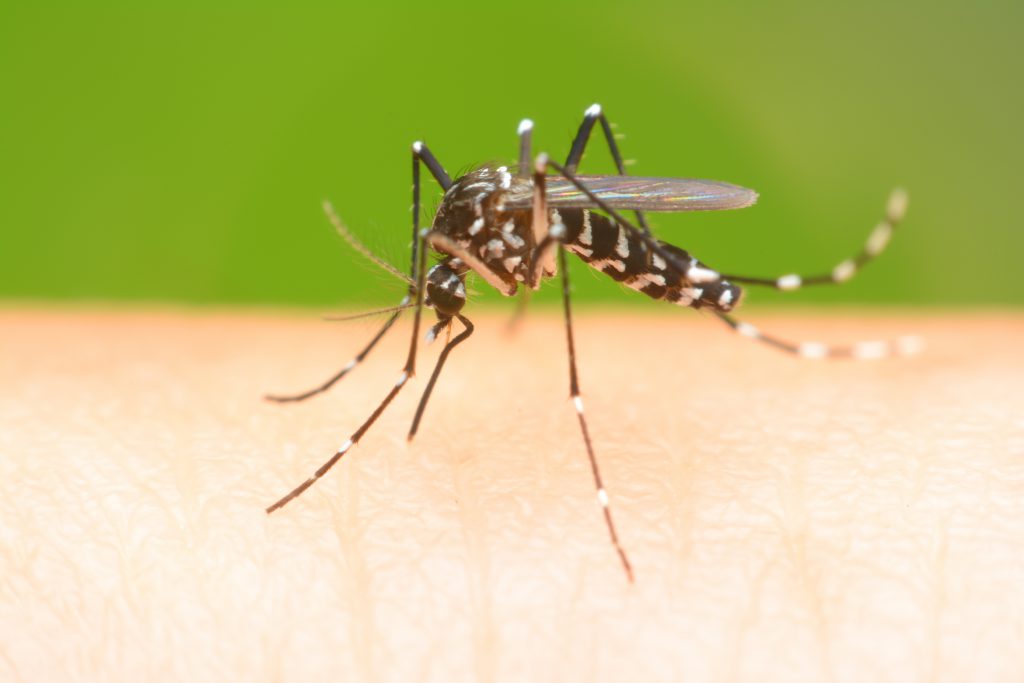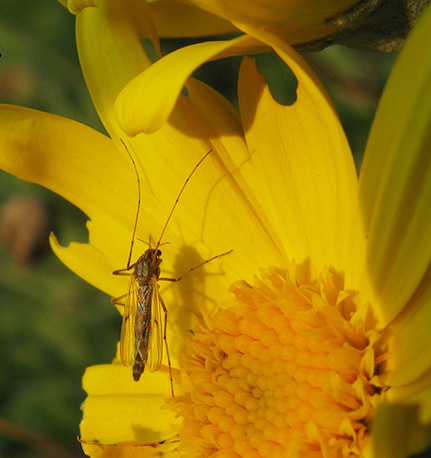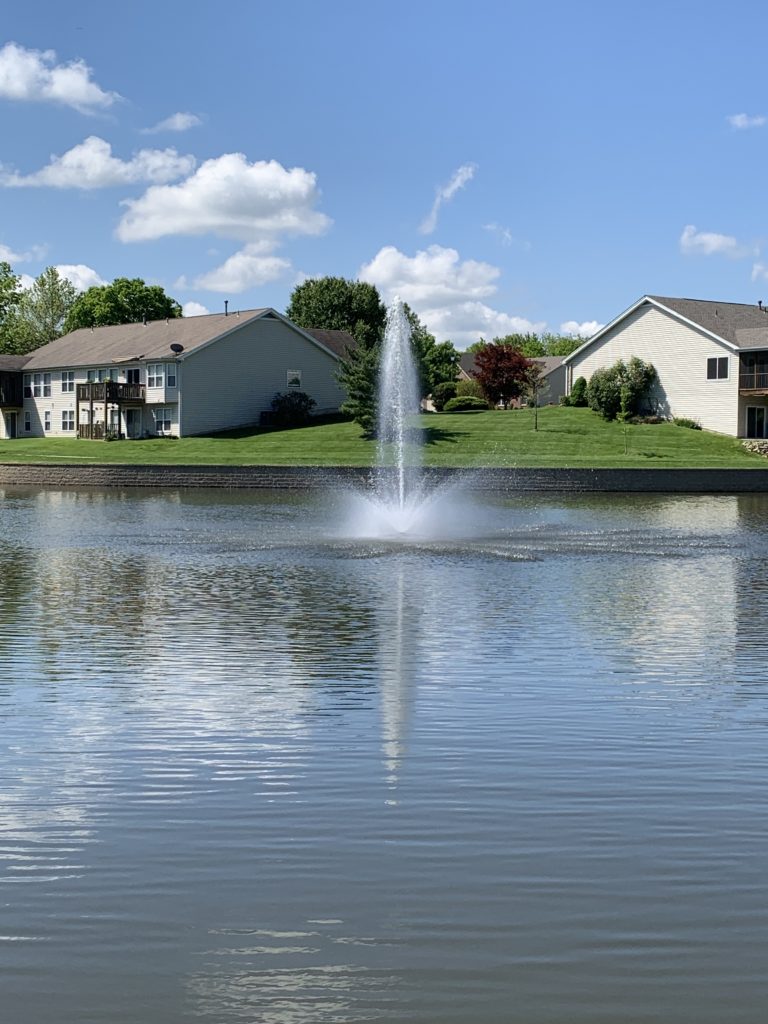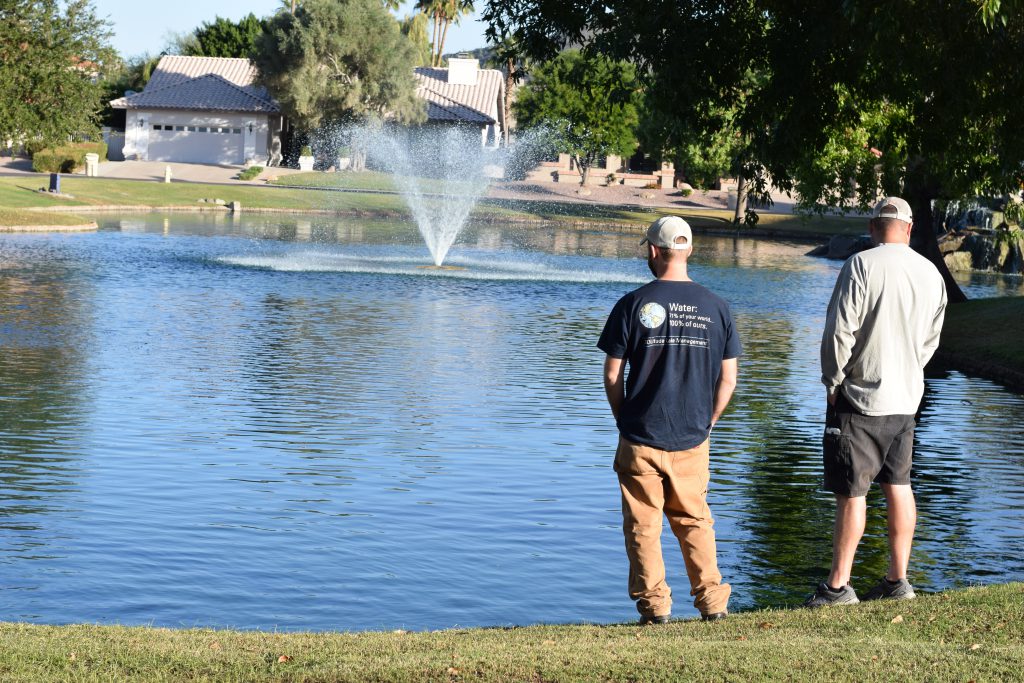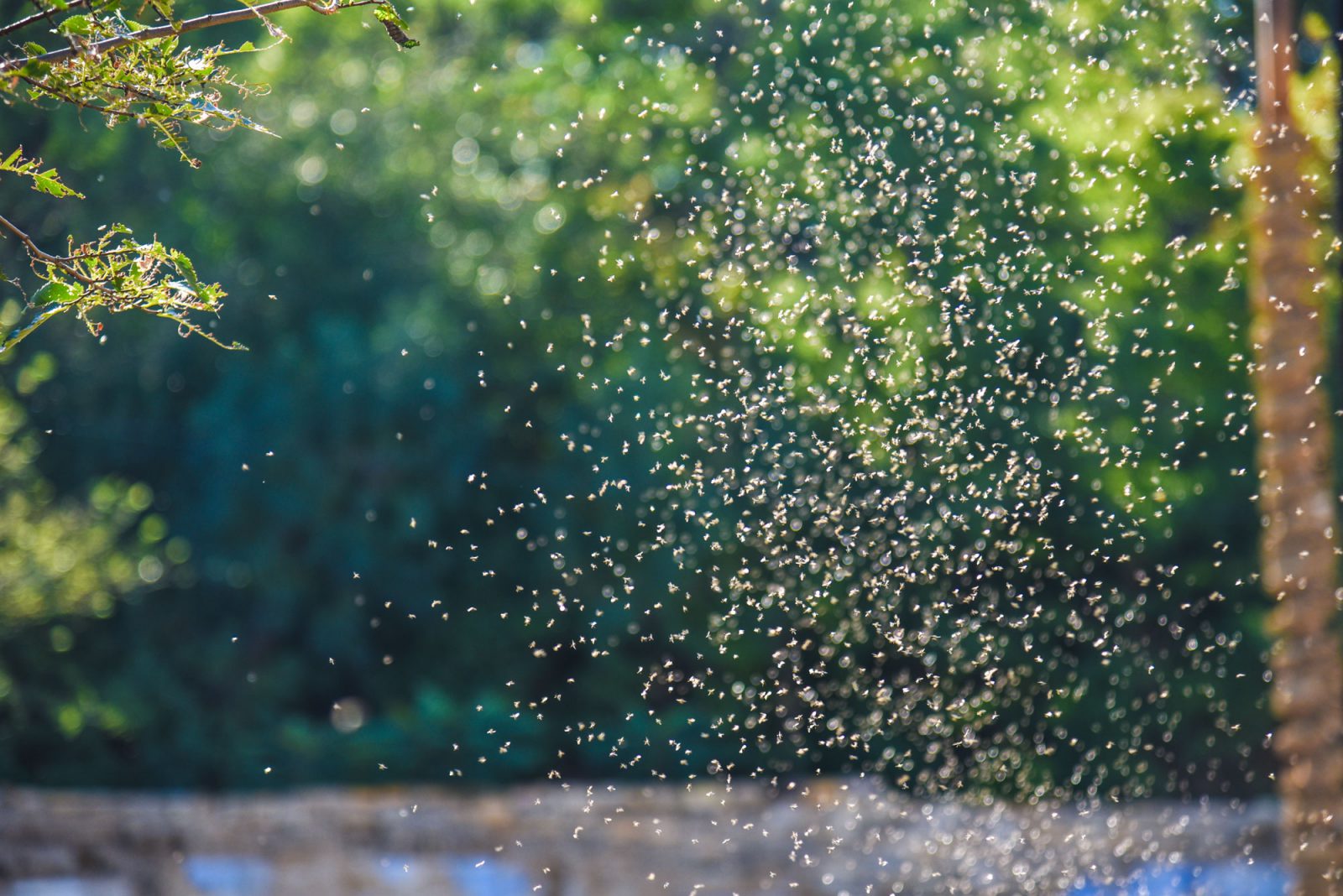
Midges vs. Mosquitoes: What Is the Difference?
When you notice a swarm of flying insects around a lake or pond, you may assume they are mosquitoes. They could be, but they may also be midges. Mosquitoes and midges are two types of flying insects that are often mistaken for each other due to their many commonalities. In reality, these two insects are quite different if you know what to look for – you just might need to pull out your magnifying glass.
Here are the key differences between midges and mosquitoes:
Mosquitoes
All mosquitoes have a proboscis (an elongated sucking mouthpart). Both males and females use their proboscis to consume nectar from flowers, but females also use it to bite and suck blood, which she needs to produce eggs. A female mosquito’s saliva causes itching, but they are also capable of transmitting dangerous diseases into their hosts like Yellow Fever, Malaria, West Nile Virus, Zika, Dengue Fever, and more.
The wings of the mosquito differ from those of the midges, as they are longer than their body. They are also fringed wings—since they have scales that make a fringe-like border on the wing’s trailing edge. When at rest, mosquitoes have a humpback appearance as they hold their body away from the surface.
Harmless Midges and Biting Midges
Harmless midges are often called blind mosquitoes because of their resemblance to mosquitoes, but they don’t have a proboscis. Though they can’t bite or transmit diseases, harmless midges create irritatingly obnoxious swarms that coat cars and light poles and create bad odors when they die off.
While many midges do not bite, it’s important to note that some can. These biting midges are often called no-see-ums because they are much smaller than mosquitoes. Due to their small size, they are able to get through doors and screens that normally keep mosquitoes out. Midge bites give a noticeable stinging sensation. Eventually, their bites can turn into welts up to two inches in diameter. Biting midges have the ability to transmit parasitic nematodes, African horse sickness, Epizootic Hemorrhagic Disease, bluetongue disease, arboviruses, and non-viral animal pathogens.
Characteristics of Midges
Proboscis — mosquitoes and biting midges have a proboscis (an elongated sucking mouthpart), while harmless midges do not.
Wing appearance — the wings of a midge resemble barren panes of glass, while the wings of mosquitoes have scales that look like fringe or fine hairs.
Wing length — midges have short wings, while mosquitoes have long wings that are the length of their body.
Flight speed and swarming —midges fly slowly and often form swarms, while mosquitoes fly faster and generally don’t swarm.
Light — midges avoid direct sunlight, while mosquitoes are generally active in direct sunlight.
Rest position — midges have a straight posture when they land since they lower their thorax onto the surface, while mosquitoes have a humpback posture since they keep their body away from the surface.
Threat — most midges are harmless and help break down matter in natural ecosystems, while mosquitoes feast on blood and transmit diseases.
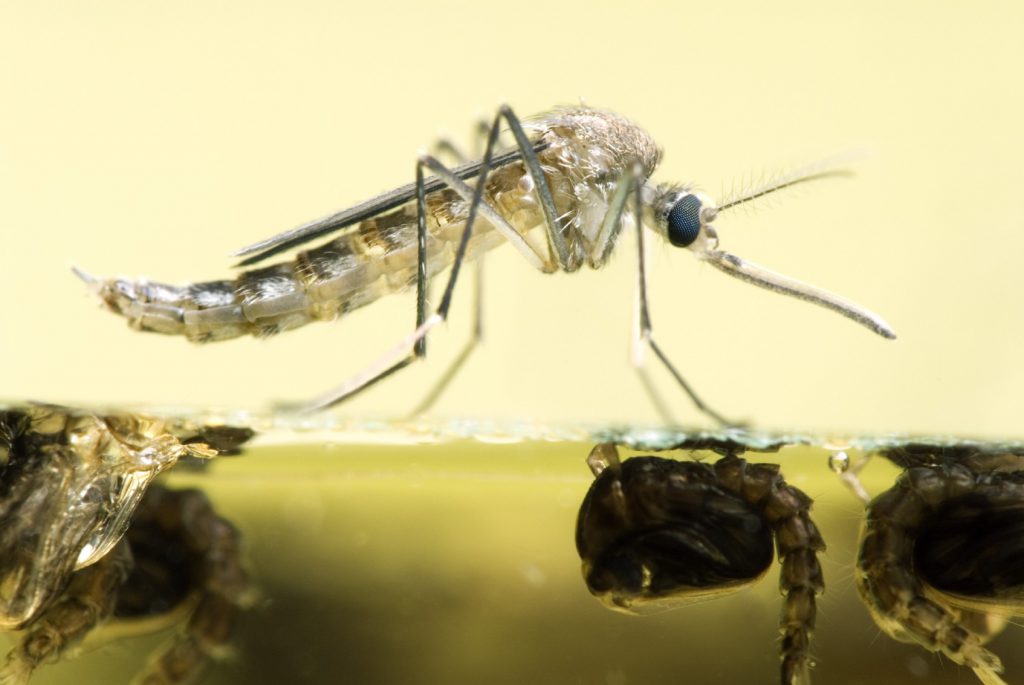
Key Commonalities Between Midges & Mosquitoes
With all their similarities, it’s easy to see why people often confuse midges for mosquitoes or think they are both the same insect.
- Midges and mosquitoes are different species belonging to the same order: Diptera.
- They are both insects that have functional wings.
- They each have three parts: head, thorax, and abdomen.
- They each have two large compound eyes.
- They each have long bodies and narrow wings.
- They each lay their eggs in water and have aquatic larvae.
- They both are a major food source for fish, birds, and insects.
The 4 Life Stages: Midges
Aquatic midges are one of the most abundant and common organisms found in natural and manmade waterbodies. Midges lay their eggs on top of the water, where they generally take four weeks to develop into flying adults. The larvae are relished by sunfish, while the pupae that emerge from them are an important food for other fish. In addition, large populations of freshwater midges often indicate that the lake water contains an excess of nutrients and algae.
Stage 1: Eggs
Female midges lay eggs in aquatic environments, which then hatch within a few days depending on water temperature, pollution, and predators.
Stage 2: Larvae
This stage lasts 2-4 weeks, depending on the water temperature. This stage occurs at the bottom of the waterbody. They don’t move around much, but simply attach themselves to a rock or branch and hang on until they hatch.
Stage 3: Pupa
The pupa stage lasts three days, after which the pupa swim quickly to the surface. Once they reach the surface, they are adult midges.
Stage 4: Adult
When adult midges leave the water, the males mate with the females immediately.
The 4 Life Stages: Mosquitoes
Mosquitoes also need a wet place to lay their eggs, and they often choose lakes and ponds for that purpose. The female mosquitoes find a shady, protected area in a lake, and in about 8-10 days adult mosquitoes emerge.
Stage 1: Eggs
Hatch when exposed to water.
Stage 2: Larvae
Also called wrigglers, mosquito larvae live in water, molt several times, and surface to breathe.
Stage 3: Pupa
In this stage, the pupa does not feed but develops until the body of the newly formed adult emerges and leaves the water.
Stage 4: Adult
Emerges and flies as soon as its body has hardened.
How Do I Get Rid of Midges & Mosquitoes?
During warm weather, midges and mosquitoes can breed in any puddle of water. To eliminate, or at least reduce prime breeding sites for midges and mosquitoes, consider taking the following steps:
- Identify anything outside that holds water, such as containers, watering cans, ceramic pots, gutters, bird baths, old tires, and even potholes, and take action to prevent water from pooling.
- Drill holes in the bottoms of your outdoor planters and recycling containers so that water will drain and not be collected.
- Keep roof gutters clear and clean so that leaves don’t plug the drains.
- Turn over wheelbarrows and plastic swimming pools when not in use.
- Do not let water become stagnant in birdbaths, water gardens, ornamental pools, and swimming pools.
- Introduce floating fountains or submersed aerators into lakes and ponds to increase circulation and create an undesirable habitat.
- Stock waterbodies with predator fish like minnows and mosquitofish to feed on larvae.
Effectively Manage Nuisance Midges & Mosquitoes
Mosquitoes and midges are a problem that won’t be going away anytime soon. There are thousands of different species of mosquitoes and midges across the globe, each with their own characteristics and management challenges. Mosquito experts understand the complexities of insect control and the most effective strategies to target these nuisance pests. Consider speaking with our professionals to learn more about your midge and mosquito management options.
The Benefits of Aeration
Build Your Midge or Mosquito Management Plan
Call us at 888-480-5253 or complete the form below to connect with an aquatic management expert.
SOLitude Lake Management is a nationwide environmental firm committed to providing sustainable solutions that improve water quality, enhance beauty and preserve natural resources.
SOLitude’s team of aquatic scientists specializes in the development and execution of customized lake, stormwater pond, wetland and fisheries management programs. Services include water quality testing and restoration, algae and aquatic weed control, installation and maintenance of fountains and aeration systems, shoreline erosion control, muck and sediment removal and invasive species management. SOLitude partners with homeowners associations, golf courses, private landowners, businesses and municipalities. SOLitude Lake Management is part of Rentokil, a leading business services company, operating across the United States, Canada and Puerto Rico.
For more information, visit SOLitude Lake Management at solitudelakemanagement.com, and connect on Facebook, LinkedIn and Twitter.








